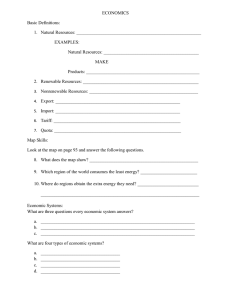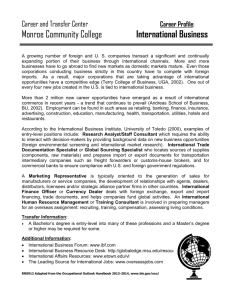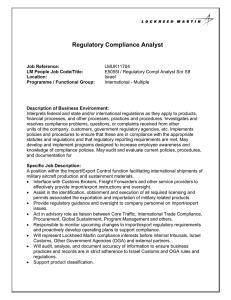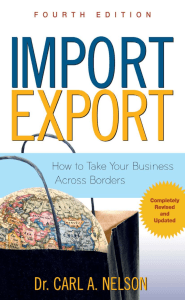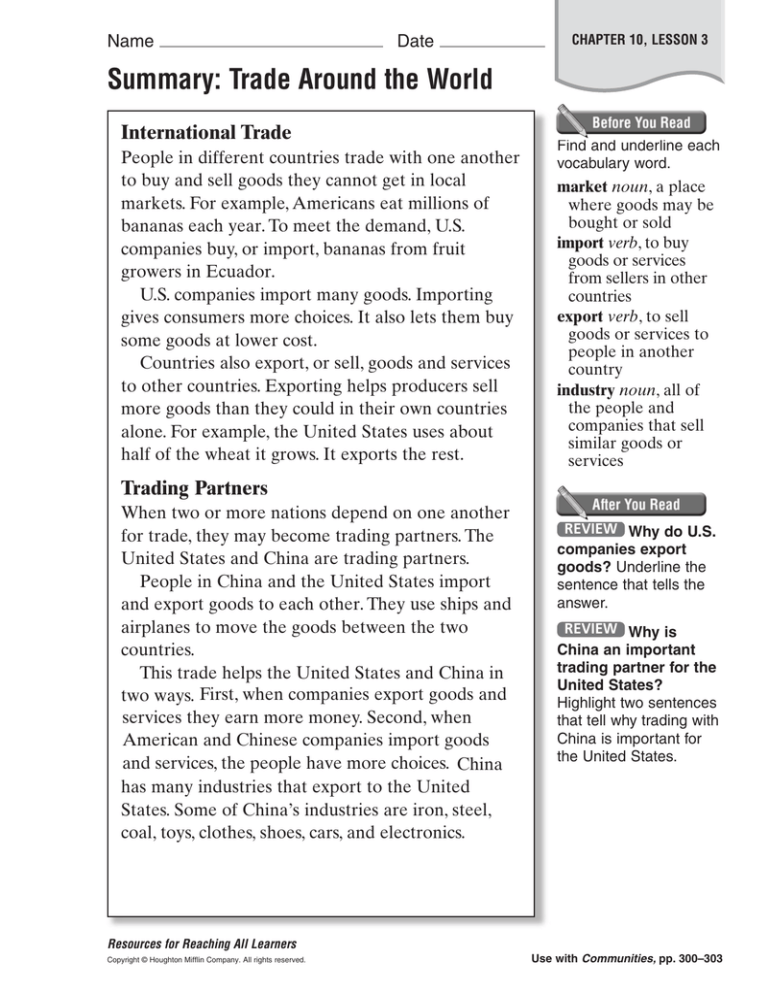
Name
Date
CHAPTER 10, LESSON 3
Summary: Trade Around the World
International Trade
People in different countries trade with one another
to buy and sell goods they cannot get in local
markets. For example, Americans eat millions of
bananas each year. To meet the demand, U.S.
companies buy, or import, bananas from fruit
growers in Ecuador.
U.S. companies import many goods. Importing
gives consumers more choices. It also lets them buy
some goods at lower cost.
Countries also export, or sell, goods and services
to other countries. Exporting helps producers sell
more goods than they could in their own countries
alone. For example, the United States uses about
half of the wheat it grows. It exports the rest.
Find and underline each
vocabulary word.
market noun, a place
where goods may be
bought or sold
import verb, to buy
goods or services
from sellers in other
countries
export verb, to sell
goods or services to
people in another
country
industry noun, all of
the people and
companies that sell
similar goods or
services
Trading Partners
When two or more nations depend on one another
for trade, they may become trading partners. The
United States and China are trading partners.
People in China and the United States import
and export goods to each other. They use ships and
airplanes to move the goods between the two
countries.
This trade helps the United States and China in
two ways. First, when companies export goods and
services they earn more money. Second, when
American and Chinese companies import goods
and services, the people have more choices. China
has many industries that export to the United
States. Some of China’s industries are iron, steel,
coal, toys, clothes, shoes, cars, and electronics.
REVIEW Why do U.S.
companies export
goods? Underline the
sentence that tells the
answer.
REVIEW Why is
China an important
trading partner for the
United States?
Highlight two sentences
that tell why trading with
China is important for
the United States.
Resources for Reaching All Learners
Copyright © Houghton Mifflin Company. All rights reserved.
Use with Communities, pp. 300–303



